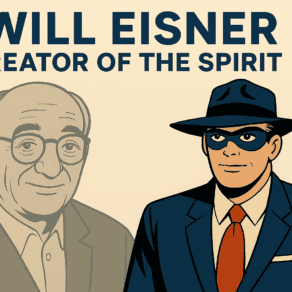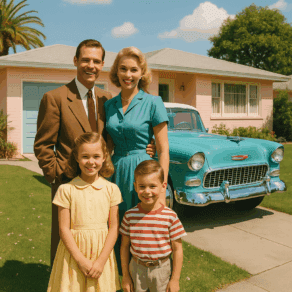
The Golden Era — most often used to describe the 1950s — refers to a time of economic growth, social optimism, and cultural blossoming that left a lasting mark on fashion, entertainment, family life, and global identity.
1.Economic Boom: The Foundation of the Golden Era
One of the defining features of the Golden Era — especially in the 1950s — was the extraordinary post-war economic growth. After the devastation of World War II, countries like the United States entered a period of rapid industrial expansion, fueled by returning soldiers, government investment, and a booming job market.
Families had disposable income for the first time in decades. This led to:
- The rise of suburbia, with developments like Levittown offering affordable homes to the middle class.
- The explosion of automobile ownership, allowing people to live outside city centers and commute with ease.
- A new focus on leisure and home life, from backyard barbecues to television sets in every living room.
This period gave birth to the modern middle class dream — owning a home, a car, and enjoying family life. It was this sense of financial stability and prosperity that earned the 1950s its place as the Golden Era of consumer optimism.
2. Cultural Optimism: Hope, Stability & Domestic Life
The world was eager to turn the page on war, and the 1950s delivered a new sense of safety and stability. Nuclear families were idealized, patriotism was strong, and traditions were celebrated. People turned their attention to:
- Raising children
- Building careers
- Enjoying leisure and travel
This optimism was reflected in everything from pastel kitchens to gleaming cars and sunny advertising slogans. The “perfect family” image may have been a bit idealized, but it was deeply rooted in the genuine hope and unity that defined the Golden Era.
3. Fashion Elegance: The Birth of Modern Style Icons
In the Golden Era, fashion reflected values of grace, femininity, and formality. Thanks to designers like Christian Dior, who introduced the “New Look” in 1947, the 1950s became an era of:
- Nipped waists
- Full skirts
- Gloves, pearls, and polished heels
Women dressed to impress — not just for evenings, but for everyday errands. Style icons like Grace Kelly, Audrey Hepburn, and Jackie Kennedy became symbols of elegance.
Men also embraced sophistication, with tailored suits, crisp shirts, and slicked-back hair becoming the uniform of the decade. The 1950s Golden Era wasn’t casual — it was refined, intentional, and aspirational.
4. Entertainment Explosion: Hollywood’s Golden Age
The 1950s weren’t just about post-war recovery — they also gave rise to one of the most vibrant periods in film, television, and music history. This was the true peak of Hollywood’s Golden Age, with glamorous stars lighting up the silver screen:
- Marilyn Monroe, James Dean, Elizabeth Taylor, and Humphrey Bogart became household names.
- Drive-in theaters and black-and-white TVs brought stories into people’s lives in new ways.
- The rise of rock ’n’ roll — led by Elvis Presley, Chuck Berry, and Little Richard — changed the sound of youth forever.
5. Mass Consumerism: The Shopping Boom of the Golden Era
Another cornerstone of the Golden Era was the rise of mass consumerism. With money to spend and a desire for comfort and modernity, households across America embraced lifestyle branding for the very first time.
- Advertising agencies flourished, especially on the new medium of television, shaping how people dressed, cooked, cleaned, and entertained.
- Brands like Coca-Cola, General Electric, and Maytag became household names, symbolizing progress and status.
- Shopping malls emerged, creating new spaces for socializing, fashion, and teen culture.
Even fashion became commercialized: catalogs, department stores, and beauty campaigns encouraged women to adopt a polished, put-together look — think matching handbags and shoes, red lipstick, and elegant dresses for every occasion.
The 1950s Golden Era marked the first time in history where what you bought defined your identity, and this consumer culture shaped decades of branding, fashion, and media to come.
The 1950s Golden Era was more than just a decade — it was a moment in time when hope, style, and progress collided. It created the blueprint for modern living, from the dream home and nuclear family to Hollywood glam and brand loyalty. Even today, echoes of this era are felt in vintage fashion, retro design, and cultural nostalgia.






Leave a Comment